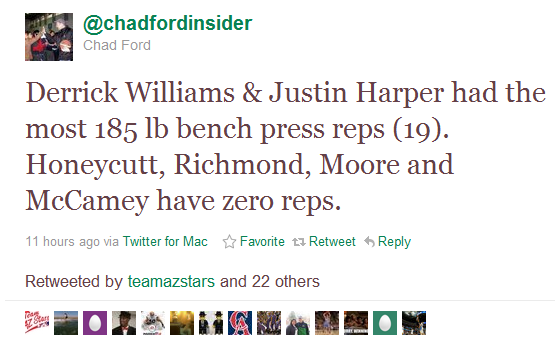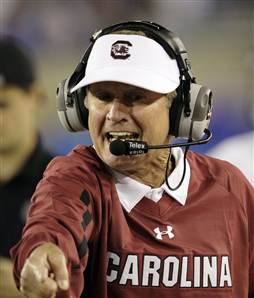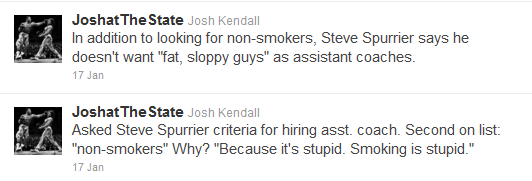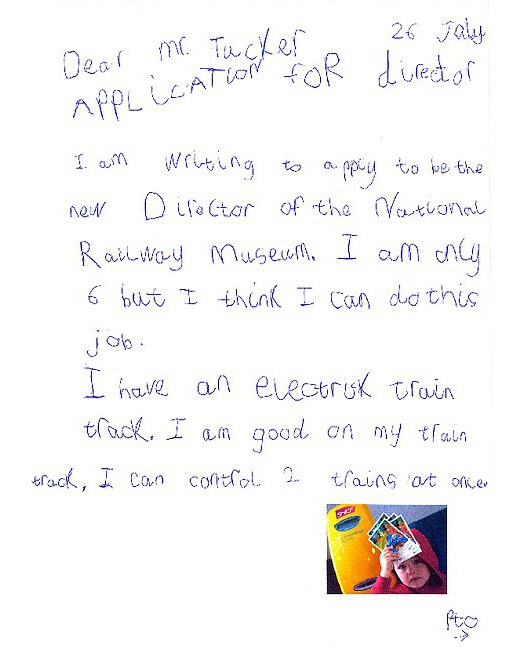Note: This week I am taking a look back on some of the 2011 posts that were either popular, interesting, (at least to me), or that might warrant a re-visit for some reason before the year is officially in the books. And also after about 200 or so posts this year, I am more or less tapped out of original ideas and want to recharge a bit. So that said, I hope you enjoy this little look back at 2011 here on my tiny corner of the internets.
Sure I like to write about sports. Maybe, just maybe a little too much, (debatable). Of all the sports-themed posts on the blog in 2011, this one from May, a look at talent assessment methodologies and titled 'Bench Pressing and Basketball' was my favorite.
--------------------------------------------------------------------------
With the National Basketball Association player draft fast approaching, fans, observers, and pundits alike love to speculate and predict the player draft order, and imagine the glorious future for their favorite team once this years' version of young Timmy 'The Flint Assasin' Sackett, or some other such prospect joins the squad.
Readers of this site, along with my pieces on Fistful of Talent, know that sports, and in particular how the talent evaluation and assessment processes that professional sports teams undertake as they consider which players to draft, recruit as free agents, trade, and compensate; make for some compelling stories and often illuminate applicable lessons for those of us with concerned with more mundane but similar workplace conundrums. None of the 'Sports and HR' parallels are more clearly illustrated than annual player drafts that all the major USA professional sports leagues conduct.
The purpose of these drafts is to help 're-stock' the talent pools in the league with new players, ones that have the capability and potential to raise the overall talent profile of the league and the individual teams. Essentially each season, younger, more talented players (or at least ones judged to have potential to be good players), enter the league while older and/or less skilled/more expensive players exit. It is a kind of a cool, virtuous 'Lion King' style circle of life, but will louder music and more tattoos.
The trick for talent evaluators and people in charge of player personnel decisions in the draft is how to assess the complex combination of a prospect's performance on the court to date (usually in college basketball, but sometimes just high school, or international play), the player's physical attributes, their personality and character, and finally whether or not that elusive 'fit' between style, physical traits, and mental make-up exists between the prospect and the team.
You will often see quotes from NBA or other sports execs talking about players they select as being 'Our kind of player', or 'His style fits how we like to play'. These quotes are as much about cultural and organizational fit as they are about hitting jump shots or ability to rebound the basketball. The rules of the game are the same for every team, but how they go about assembling the team and their philosophies about how to best accomplish the universal goal of winning the championship are all unique.
So in sports, like in most every other line of business, talent assessment and selection is really hard. So NBA teams have come to increase or expand the variables they assess and measure when it comes to the talent evaluation process for potential draftees. One of these variables is the number of times the prospect can successfully bench press 185 lbs, a moderate amount of weight for a well-conditioned athlete, certainly not a power lifter or bodybuilder burden, but also a weight that could present a challenge. The 185 pound bench press is meant to give a generalized assessment of the player's upper body strength, that at least in theory could translate to effectiveness on the court. But bench pressing isn't really basketball, they don't roll out a bench and some barbells in the 4th quarter of a close game. The other advantage to teams in using the bench press test, (and a myriad of other fitness and strength tests they use), is that every prospect takes the same assessments, thereby giving the teams a common data set across the entire talent pool from which to make comparative judgments.
But the data itself offers a team no competitive advantage - every team in the league has access to the same information. The trick is knowing how to interpret the 'measurables' (bench press, vertical jump, etc.), with the 'intangibles', (character, coachability, likeability), and finally a frank assessment of 'Can this guy actually play?'; in order to make the best talent selections.
But back to the bench press, which is the reason I wrote this piece. Yesterday I noticed a tweet from Chad Ford, one of ESPN's basketball writers and analysts commenting on the bench press test results from a few of this year's current NBA draft prospects. The tweet is below:

The implication of the tweet is a kind of red flag or warning about those few players unable to successfully bench press 185 pounds. That teams considering drafting these players may pause, and fans of teams that eventually do take these players might need to be concerned that their lack of demonstrable upper body strength (doing something that isn't actually playing basketball), portends poorly for their future performance as NBA players.
It is hard to say for sure if this poor performance on the test will actually hurt these players draft position, it certainly won't help it, but I think the larger point is about data collection in general. Whether it is an NBA team evaluating a power forward, or a software company assessing the background and skills of a candidate for a development job, our abiliity to collect reams of data about background, capability, demonstrable skills, and even mental make up has never been greater. We have access to powerful analytics tools to crunch the data and perhaps eventually to construct detailed and predictive 'success' models.
It could very well be the success on the bench press test does suggest future success on an NBA team. Or failure on the test predicts failure on the court.
But even if we can create those kinds of models, for basketball players or software developers, they will never be fool proof, as people and performance are ultimately likely too unpredictable to ever understand absolutely. We have to be open-minded enough to ignore our own models from time to time.
You may, even if you are not a basketball fan, have heard of a player called Kevin Durant. He is a star player for the Oklahoma City Thunder, has led the league in scoring, led the USA team to the Gold Medal in the World Basketball Championship last summer.
player for the Oklahoma City Thunder, has led the league in scoring, led the USA team to the Gold Medal in the World Basketball Championship last summer.
In 2007, when Durant declared himself eligible for the NBA draft, he was unable to bench press 185 a single time.
And we know how Durant has worked out.
Sure collect, assess, analyze, correlate, model - it's important. But don't forget, bench pressing is not basketball.


 Steve
Steve





